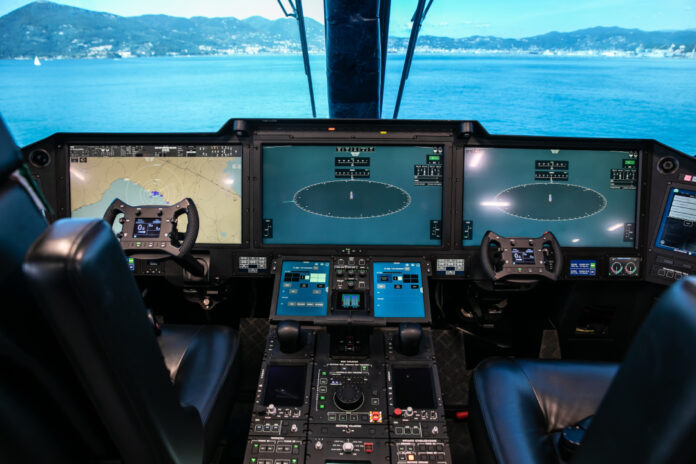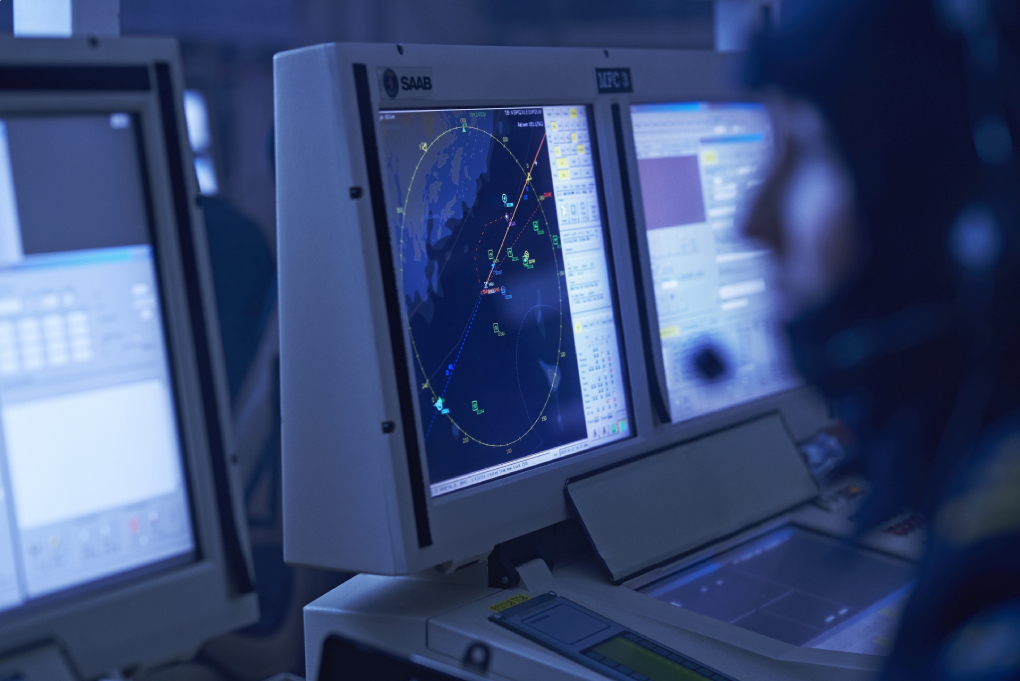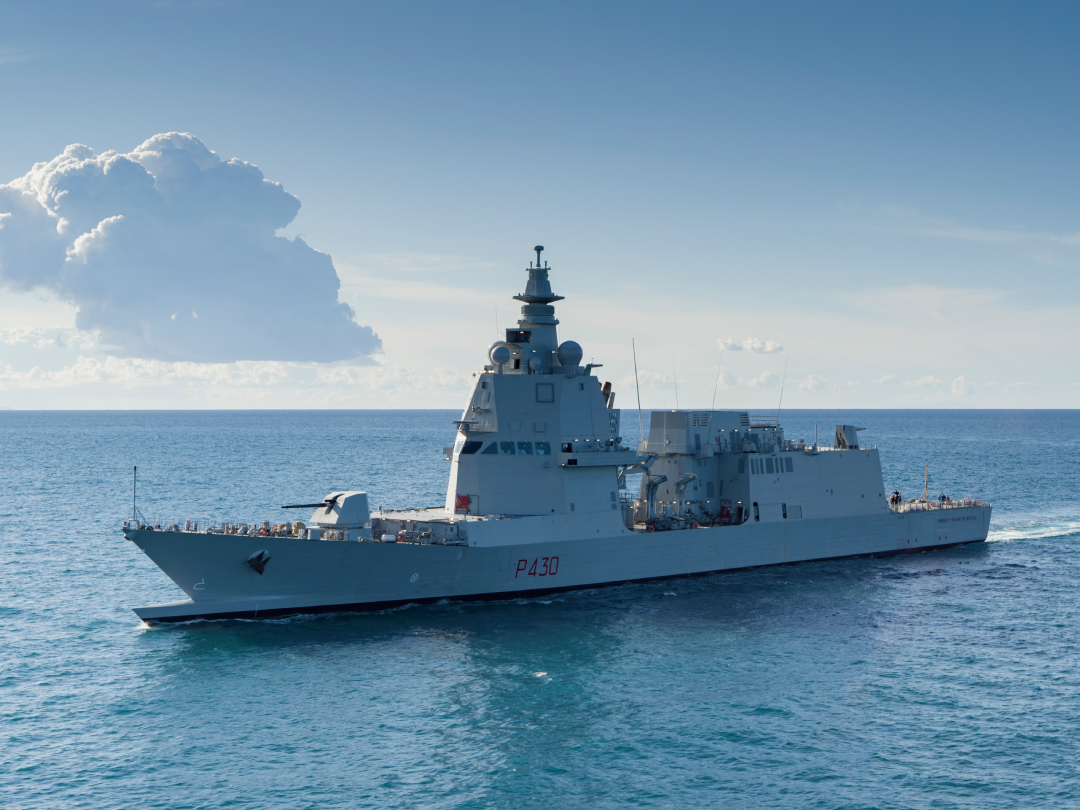
The increasing complexity of naval combat requires speed of assimilation now beyond a ship’s crew.
The evolution of naval Combat Management Systems (CMS) and the advancing capabilities of these systems can generally be tracked alongside the processing power of computers. Naval CMS are in essence the central nervous system and brain of a warship taking in all the sensory data detecting and providing information about threats. Then it performs an analysis to decide the best way in which to respond, either through countermeasures and avoidance or using weapon systems to negate the threats in order of priority and severity.
By providing the central architecture on which the combat operations of a warship are performed, the naval CMS is the key element in any engagement. Modular in design and with an open structure it can allow new sensor or weapon systems to be integrated when needed to add to a warship’s capability, making is scalable to suit mission parameters. Modularity offers redundancy meaning that there is no single point of failure so that a CMS can keep functioning under a variety of conditions.
It must also be easy to use. Information must be processed and prioritised in a way to ensure that commanders are able to make decisions faster and for weapons operators to react in a timely fashion. This is completed through a process known as the Observe, Orient, Decide, Act (OODA) loop. The CMS carries out the OODA loop processes to complete the kill chain – the process by which sensor detects, identifies and classifies a target and initiates a response from weapons.
Modern warfare at sea in the missile age is predicated on the theories of US Navy Captain Wayne Hughes writing his ‘Fleet Tactics’ series of books since 1986. He placed an emphasis on the lethality of missile salvos, which can be successful even against well defended ships, because if even one gets through then it can neutralise its target. His premise was to ‘fire effectively first’ because whichever force successfully completes an engagement and destroys opposing targets before they can act wins the battle. This means that the speed of the kill chain and therefore the effectiveness of the CMS is paramount.
AI Takes CMS to Next Level
The technological advances that are set to dominate the 21st Century include Artificial Intelligence (AI), which is expected to allow for the rapid processing of data at an order of magnitude faster than what CMS are capable of doing at the moment. With the availability of ever increasing amounts of data from more and more platforms it is starting to overwhelm analysts and the ability of current computing systems to manage the load. The application of AI-enhanced systems will be able to deal with these loads and has the potential to offer decision-makers better choices based on a wider range of data.
Swedish defence company Saab Systems has been successful with its 9LV CMS. Johan Hägg, product manager 9LV Combat System Solutions at Saab told AMR: “A more rapid combat pace requires an increased support for both decision making and action, two areas which might be treated as somewhat separate in terms of technical development. AI technology is coming into play, especially when processing large amounts of data from both onboard and offboard sources. Still, we believe that a deterministic approach is necessary within weapon control and engagements.”
He added: “Communication that is secure and dynamic is key and will dictate the speed of fielding these sought-after capabilities.”
Saab’s 9LV was originally developed for naval forces operating in the Baltic Sea. Because of the conditions in the Baltic, the 9LV needed to be able to manage high level of clutter and distinguish targets from the environment and the commercial traffic. This requires a rapid refresh rate of the tactical picture and the ability to take account of regular variations. With a wide variety of ships needing a highly capable CMS, Saab designed the 9LV to fit onto platforms as small as combat boats through to frigates and submarines.

“AI and related technologies are advancing fast,” Hägg said, “This together with increasing computing power will make the 9LV CMS more capable of handling ever larger amounts of data, to be more adaptive and to take care of some of the operator workload. We believe that we are improving the situational awareness by, for instance, identifying patterns or tactical trends in large areas of operations by the use of this technology.”
Naval CMS must also be linked to a ship’s tactical communications systems so it can receive data from other sources off-board the vessel. It means that satellite communications or information from a drone, maritime patrol aircraft or other ships can be processed and included in the ship’s tactical and operational picture.
The kinds of sub-systems integrated include sonar and radar systems, EO/IR systems, guns, missiles, torpedoes, EW systems, tactical data links, navigation equipment communications systems and more recently Unmanned Aerial Vehicles (UAVs) and their sensor and communications links. Some CMS can include a Fire Control Station that is already integrated to allow for faster reaction times.
Saab’s literature on the 9LV design said the CMS “is about making the platform, products and selected subsystems work optimally together and with optimal reliability, availability, maintainability and testability characteristics. This is achieved by systematic definition, subsystem election/proposal, interface engineering and verification.”
Furthermore, cyber security has become an essential part of a naval CMS architecture to ensure that software vulnerabilities are not exploited. Having a sophisticated sensor and weapons outfit will be useless if the CMS can be disabled during a cyber attack.
“9LV is at the forefront of naval cyber security where we are using both tools and methods to keep our systems secure,” Hägg said, “The pace of the cyber security field is shaping not just architecture and design, but also the pace of upgrades and on the customer side, how to receive updates and keeping the systems accredited.
The Combat Information Centre (CIC) is the heart of the ship controlling the majority of the ship’s offensive and defensive systems and is linked into everything the ship does. The layout of the CIC is essential to how the CMS will function and which operators conduct various taskings. Most modern CMS have a CIC that uses multifunction consoles (MFCs) so that operators can access which ever mission function they want from any console. The larger the ship, the more sub-systems it will have and therefore the more MFCs it will host in the CIC or on the bridge.
It is at these consoles that there needs to be an easy-to-use interface so that the operator can work at a high level increasing the mission capability using tailored configurations with automated routines that can reduce the workload and allow them to focus on the most critical tasks. These operators are the ones that receive all the sensor information and which the CMS will visualise. It is the analysis of this data that the CMS will present offering situational assessments and tactical judgements based on system readiness and threat priorities.

The people interface
The human-machine interface (HMI) is the key part of this: what information is displayed, when and how, followed by the ability for a decision input to be activated.
“The HMI will be increasingly important,” Hägg said, “How should information be presented in order to be correctly received and handled by operators and the command team, and how can the crew interact in a simple and distinct way under loads of stress?”
He added: “Augmented Reality may help to visualise complex and very quick scenarios for operators and decision makers. We are very conscious of the operators and at what level you are able to receive information and make correct decisions in a stressful situation.”
The 9LV is able to stores input from all IR and TV sensors on board the vessel and operators can access the video stream at any time providing a stablised panoramic image or the ability to zoom in multiple directions simultaneously. Additional data can be overlayed on the image using augmented reality to improve situational awareness.
According to Saab the 9LV: “generates a picture from both internal and external data inputs. It allows the operator to interact through a selection of modes as well as to directly intervene with and override commands. The operator is supported by a situation and anomaly detection function. This automates tasks to allow the operator to focus on tactical decisions.”
For example, in a complex warship like a frigate fitted with anti-air warfare (AAW) systems, Saab has stated that the 9LV Air Defence Coordination (ADC), when fully automatic, can initiate a firing in under a second “only requiring fire permission confirmation from the operators.” The corresponding Surface Defence Coordination (SDC) provides an automated response to swarms of surface attacking threats allocating the appropriate weapon to a surface target.
The level of automation in the CMS can reduce workloads in high pressure environments significantly. According to Saab the following tasks are automated: the generation of an operational picture; the semi-automatic or automatic fusion of information sources local or networked; keeping track of ADC and SDC resources onboard or offboard; threat evaluation and prioritisation; engagement planning and offering of alternative deployment alternatives; execution control sending engagement requested to weapons or decoys and sending ship heading recommendations to avoid blind sectors; and task group defence coordination.
Italian defence company Leonardo has developed two new CMS products to meet emerging naval requirements. The first is what it calls the ‘naval cockpit’, which is a bridge system for the Italian Navy’s seven new Pattugliatori Polivalenti di Altura (PPA) -class patrol ships. The second is its own new submarine CMS developed from its existing ATHENA Mk2 CMS for surface warships.

The naval cockpit design draws on the company’s experience as a helicopter manufacturer includes a two operator stations with joysticks, engine throttles and control knobs as well as a central console between the two operators that has switches, lights and controlling devices that contribute to a ‘cockpit-like’ environment albeit on a ship. Its functionality incorporates a mix of standard navigation systems with some functions of the CMS.
The naval cockpit only needs two operators – a pilot and co-pilot – to conduct ship and air operations by taking on the roles of bridge watch officer and commander. The company’s literature explains: “This workstation enables operation of the machines, rudders, platform systems, and some Combat Management System (CMS) functions, including the weapons equipment,” adding that the ship’s commander also has separate control and can interact with two pilots.
A spokesperson from Leonardo told AMR: “This is possible thanks to CMS automatism, innovative interface and dedicated solution designed around cockpit, also for communication (all the internal and external communications can be managed and used from cockpit. In addition to that, an innovative Commander Console was added, based on three retractable screens, one for Platform Information, one for CSS Information (NATO Network, Reserved DBs etc) and one for C/S, transforming the Commander Role from a supervisor to a truly active CMS Role.”
Leonardo has described how on naval vessels the minimum bridge crew comprised the commander, two-to-three helmsmen, a communications officer and seven CMS operators. “The current PPA configuration reduces this to seven people: commander, pilot, co-pilot and four CMS operators (communications, radar, sonar, etc.),” the spokesperson stated. The cockpit also cuts the unit’s rapid response time to sudden threats by maintaining the ship in a high state of readiness – the two operators have direct access to point defence weapons in order to react to a commander’s order or react to sudden threats such as swarms of fast-moving boats or unmanned aircraft.
Against more complex threats having immediate access to sensors and weapons saves time whilst the crew can move into their battle stations and put in place a wider whole of ship response to the specific threat.
Leonardo is providing specialist training for the cockpit pilot role and is completing this on ITS Paolo Thaon di Revel (P430), the first of the PPA ships to enter service. The company is working on and expects a further evolution of the naval cockpit that will involve using augmented reality to offer operators new manoeuvring features or a more effective presentation of information.

Meanwhile Leonardo is developing the ATHENA Mk2/U variant of its ATHENA Mk2 CMS to equip the Italian Navy’s new U212 Near Future Submarine (NFS), which is the first time the company has developed a submarine CMS.
ATHENA has been adapted for the underwater environment to fit into a reduced space, noise and energy consumption. It also introduces three new capabilities.
The first is Target Motion Analysis (TMA). The spokesperson explained that the TMA “is a process to determine the position of moving targets within the operational scenario, starting from localisation via passive sonars and reconstructed using classical mathematical algorithms and new innovative algorithms based on Artificial Intelligence.”
The second is Enhanced Video Situational Awareness that the spokesperson said provides “video streaming from the periscopes by means of modern techniques such as Augmented Reality to present additional data and information using AI to improve Tactical Picture Management and Situational Awareness.”
The third system – an Underwater Sensors and Weapons Management System – is for operating the integrated sonar suite, Black Shark Advanced (BSA) heavyweight torpedoes and anti-torpedoes countermeasures.
ATHENA Mk2/U has nine MFCs (four for sonar operators and five for C2) that operators can view the tactical picture from that each consist of two touchscreen monitors 27 inches and with 4K resolution. These are smaller than those used in the surface ship ATHENA Mk2 because of the space constraints within a submarine. However, the MFCs are manufactured with special carbon fibres and are water-cooled to reduce noise. Meanwhile a commander’s console has a single 32” display.
The Leonardo spokesperson said that the Mk2/U “should be tested in factory by 2024 and at the Italian Navy Training Centre in 2025.” Meanwhile the first NFS class submarine will be delivered at the end of 2027.
With an ever changing technological landscape, navies need to be better and more diverse than their adversaries. With a focus on open architecture, cybersecurity, leading AI and Machine Learning technology, CMS will become increasingly more capable to meet emerging threats and improve the speed of warship and wider fleet offensive and defensive action.
by Tim Fish










